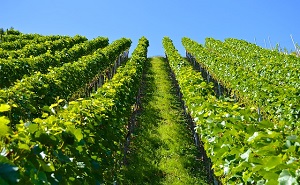Optimize the orientation of the rows of vines

- Maximize sunlight to favor the ripeness of the grapes and therefore prefer a south-facing slope
- Minimize water retention to place the vine under water stress and, thus, plant the lines facing the maximum slope
Traditionally, the choice of line orientation in vineyards serves several objectives:
Maximize sunlight to favor the ripeness of the grapes and therefore prefer a south-facing slope
Minimize water retention to place the vine under water stress and, thus, plant the lines facing the maximum slope
Today, with the increase in the frequency of heat waves and the advancing maturity of the vineyards (and therefore the harvest dates), these choices can be questioned. The aim is no longer to maximize sunlight, but to control it and allow the flow of water to become a waste of valuable resources, including also a soil erosion effect.
While numerical simulations in 2012 seemed to indicate that the line orientation did not affect the vine's behavior in the context of climate change (1), other studies have shown more recently that line orientation choices have a significant effect on the microclimate of a plot ( two )
Thus, the change in orientation is seen as a "radical" but possible option to limit the heating of the foliage (3) and potentially retain more water.
It should be noted, however, that water retention carries another risk of increasing the risk of vine disease.
Sources
(1) https://www6.inra.fr/ciag/content/download/3826/36242/file/Vol25-14-Boutin.pdf
(2) Vineyard row orientation of Vitis vinifera, Hunter et al., 2016
(3) https://www.vitisphere.com/actualite-68837-Les-pistes-possibles-pour-adapter-le-vignoble.htm
(4) Managing grapevines during heatwaves, Hayman et al., 2012
Σχέσεις
- Δίκτυο
- Λίστα
- Γεωτοποθεσία